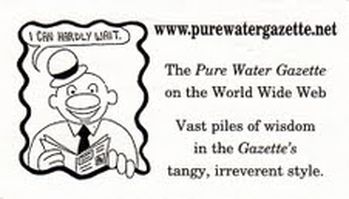Special Mid-Month Issue November 15, 2012 |
|---|
We hope you'll read the Pure Water Gazette's new "Today's Top Water News" section. New articles appear daily. Some examples of recent posts are included in his issue. |
In the News
Hurricane Sandy
The most compelling water story this month has been Hurricane Sandy. In the aftermath, the most persistent water problem has been the failure of overwhelmed sewage systems to cope with the volume of water and the subsequent dumping of millions upon millions of gallons of untreated or partially treated sewage into rivers, lakes, and the ocean.
Here are a couple of the Sandy-related wastewater stories that appeared this month in the Pure Water Gazette. They take a deeper look at the wastewater issue.
Millions of Gallons of Raw Sewage Were Pumped into Newark Bay — November 2, 2012
Aftermath of Sandy-- Raw Sewage Continues to Pour Into Waterways — November 11, 2012
Wastewater Treatment Plants and Pig Farms May Be as Dangerous as Hospitals
Although hospitals are the usual source of “super bugs,” they aren’t the only place you can pick up a virtually incurable infection. Researchers at the University of Maryland have identified methicillin-resistant Staphylococcus aureus, or MRSA, at sewage treatment plants in the mid-Atlantic and the Midwest.
MRSA is a well-known problem in hospitals, where patients pick up potentially fatal bacterial infections that do not respond to antibiotic treatment. But since the late 1990s, MRSA has also been showing up in people outside of health-care facilities.
Outside hospitals, the source of MRSA is unknown, but recent research in Sweden and in the United States indicates that sewage treatment plants may be implicated. This is of special concern because of increasing reuse of waste water.
A very limited study carried out by the University of Nebraska indicated that 83 percent of the raw sewage tested contained MRSA, but it also found that after chlorination of the wastewater no bacteria were found.
In addition to sewage plants, according to a study conducted in the Netherlands, the risks of getting MRSA are highest among people living in regions with high concentrations of cattle and pigs.
Hospitals are definitely the greatest danger, but sewage plants where the sewage is not treated with chlorine before release and livestock operations seem to also be significant risk areas for MRSA.
Fluoride Defeated 60% to 40% in Wichita, Kansas Vote. Richly Funded Fluoridation Machine Beaten Soundly by Local Effort
The people of Wichita, Kansas soundly rejected the third attempt to impose public fluoridation of drinking water on Nov. 7, 2012. Wichita is the second largest non-fluoridated city in the US and as such was the target of a well-financed effort by a coalition of the usual fluoride boosters (the ADA, CDC, Delta Dental, Pew).
One observer said that fluoridation backers were armed with a bottomless pit of money and bushels of media endorsements. Fluoride-free campaigners focused on public education and generating a city-wide debate prior to the vote. Their strategy was to keep the debate focused on the science of the issue.
Well known fluoride opponent Dr. Paul Connett gave a total of six presentations in Wichita.
Las Vegas and Clark County Duke It Out Over Storm Channel
There is a city/county political fight going on in Las Vegas between the city and Clark County officials over who is going to pay for a five-mile pipeline to handle waste water from the Nellis Air Force Base.
Water is currently being allowed to discharge into a county storm channel, but odors and insect issues have rankled area homeowners. The storm channel has become a breeding ground for chironomid midges and mayflies.
The pipeline is estimated to cost $15 million with North Las Vegas putting up $8 million up front. The county, which would oversee construction, would cover the remaining $7 million.
The battle over payment has been going on for some time.
North Las Vegas sued the county in federal court, arguing it has a right to discharge the treated wastewater into the channel. But the county called the discharge a nuisance and sought to stop it in state court.
County officials have maintained that the dry channel is intended to handle storm runoff and that the city’s dumping was illegal.
More gory details from the Las Vegas Review-Journal.
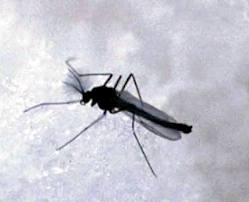 |
|---|
| Chironomid Midge |
A Renewed Interest in Emergency Water Filters Resulted from Hurricane Sandy
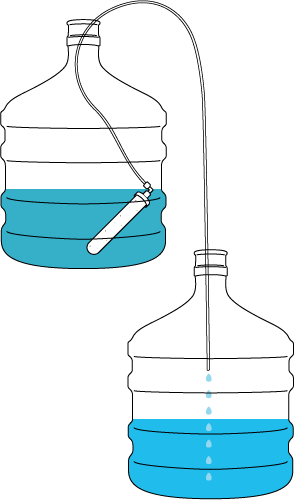 |
|---|
Superstorm Sandy has focused attention on the need for provision of potable water for the home in times of emergency. Our websites and newsletter have over the years addressed this subject in some detail. Here are some places you might want to look for emergency water treatment information. A Practical Guide to Emergency Water Filters. A comprehensive and sensible look at how to provide water for emergencies using simple and inexpensive methods. Prepared by Pure Water Products. Emergency Siphon Filters. The page shows how to have state-of-the-art Doulton performance without having to buy a $400 metal can to make it work. “The law of gravity still works during times of emergency.” How Siphon Filters Work. The Popular Pure Water Occasional series makes siphon filters simple. |
Issue of PCE Plume at Grants, NM Resolved by the EPA
The EPA along with the New Mexico Environment Department has completed a new system designed to address a plume of chemicals that were contaminating water at a site in Grants, NM. Believed to have come from a dry-cleaning business, the chemicals — called “chlorinated solvents”– had spread through a shallow aquifer and through soil. The EPA had earlier designated the site for cleanup under the Superfund program.
The cleanup area was extensive. It included more than 570 wells placed throughout the plume. The wells are filled with emulsified vegetable oil, which stimulates the breakdown of the chlorinated solvents. The EPA also installed systems within 15 private residences that prevent vapors from contaminated soil from entering the homes. These structures complement earlier treatments that extracted about 1,000 pounds of contamination.
According to the EPA:
Prolonged exposure to the main contaminant, tetra chloroethene or PCE, can damage the nervous system and cause liver and kidney problems. The cleanup prevented contamination from spreading to the city’s drinking water wells, located two miles north of the plume, and to the San Andreas aquifer, the source of drinking water for Grants and nearby Milan, New Mexico.
The city water wells provide drinking water to approximately 14,000 residents in Grants, San Rafael and Milan. The primary contaminant of concern, tetra chloroethene (PCE), had been found at levels up to 51,000 parts per billion (ppb) in the ground water.
Softeners and Substitutes
As water softener substitutes gain popularity and acceptance, we get many questions about how conventional water softeners and the newer alternative systems compare.
Both are designed to deal with the problems associated with hard water. “Hardness” is a term used to describe the presence of calcium and magnesium in water. Excessive calcium prevents soap from lathering and can form very harmful scale on household pipes and appliances. Hardness is not a health issue, but it can cause great damage to pipes and appliances, shortening their life and making them much less efficient. Hardness is also an aesthetic issue and can can leave unsightly discoloration on fixtures.
Hardness in water is quantifiable. It is normally measured in parts per million or, more commonly, in "grains per gallon." A
"grain" of hardness is roughly 17 parts per million. Some authorities say that really hard water that should be treated begins at about 4 grains per gallon--others say 7.
Acquiring equipment to treat hardness is a tricky issue for several reasons. First, legitimate “softening” equipment is frequently oversold by profit-driven, high-pressure marketers offering equipment at "mortgage your home" prices. Additionally, some very cheap equipment is being sold that simply doesn't stand up. In addition, there are many new softener substitute products on the market that are of questionable value.
Conventional water softeners are actually ion exchangers which “swap” sodium for calcium and magnesium. In other words, they “remove" calcium and magnesium by adding a more-or-less equal amount of sodium to the water. When the sodium in the softener's resin bed is depleted it has to be replenished. That's why softeners have “brine tanks” to which salt must be added regularly. Conventional softeners do something that is measurable (remove hardness), so their effectiveness is easy to assess.
Performance of alternative units is much harder to evaluate since they do not actually remove hardness minerals. Alternative “softening” devices can range from magnets, both natural and electrical, to electronic treatments which purport to render the water's calcium content more friendly to household plumbing. Some standard water treatment devices, such as KDF, which is most frequently sold as a device for chlorine reduction, make claims of "softening" as well.
The most prominent of the alternatives to softening, however, is a technology usually referred to as TAC, or Template Assisted Crystallization. TAC systems, sold under a variety of brand names, such as ScaleNet, Filtersorb, Next, and Pelican, have gained wide acceptance. We devoted an earlier Occasional to the technology in which we quoted some expert descriptions of the TAC process:
TAC employs a special surface-treated resin bead to act as a catalytic nucleation site for the conversion and growth of hardness crystals, which are subsequently released and remain in solution without forming scale.
Atomic sized nucleation sites on the surface of small ceramic-polymer beads convert dissolved hardness into microscopic crystals. Once the crystals grow to a certain size they are released from the bead. The crystals in solution keep the hardness out of the water so that it can't form scale or interfere with soap.
Unique Template Assisted Crystallization (TAC) technology induces the formation of microscopic calcium crystals which effectively isolate hardness from the water chemistry.
Here is a chart that compares softeners with their main alternative, the popular TAC systems.
| Conventional Water Softener | TAC Scale Prevention System | |
|---|---|---|
| Requires Salt | Yes | No |
| Requires Drain Connection | Yes | No |
| Requires Electrical Connection | Yes | No |
| Prevents Scale Formation in Pipes and Appliances | Yes | Yes |
| Uses water for backwashing | Yes | No |
| Requires an Electric Control Valve | Yes | No |
| Number of Tanks Required | 2 (or more) | 1 |
| Removes Chlorine | No | No |
| Removes Iron | Yes (a limited amount) | No |
| Removes Calcium and Magnesium | Yes | No |
| Chlorine Tolerant | Somewhat | Somewhat |
| Expected Media life when used with chlorine-free water | 10 years | 5 years |
| Adds Sodium to Water | Yes | No |
| Recommended maximum hardness for standard unit | Many variables to consider, but higher than alternative unit | 25 grains per gallon (with standard media load, more with "commercial" loading) |
| Life expectancy of the unit other than the media | Many Years | Many, many years. (No moving parts, nothing to wear out.) |
| Reduces previously existing scale buildup | No | Yes |
| Requires cleaning and chemical additives | Sometimes | No |
| Extends the life of reverse osmosis units downstream | Yes | Probably |
| Makes soap lather better; saves soap | Yes | Questionable--certainly not as well as a softener. |
| Prevents spotting on dishes in dishwasher | Sometimes | Maybe |
| Guarantees a spot-free car wash | No, but it helps in many cases. | No |
The cost is not considered in the chart and comparison is hard since both types are sold in different sizes and conventional softeners are sold in many styles. Also, although the softener creates an ongoing salt expense and requires more maintenance, media replacement costs are greater for the TAC unit. By our prices, an "average" mechanical metered softener currently costs about $650 and a comparably sized ScaleNet unit is $850 to $950.
A look at residential ScaleNet units with details and pricing information is available on our main website. We also supply commercial units, but they are not yet listed on our website. Please call for information. Our conventional softeners are here.
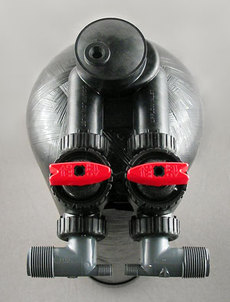 |
|---|
Basic Watts ScaleNet alternative unit, seen from the top. This simple device needs no electricity or access to drain. |
Editor's Note: We're including below a brief article about pyriproxyfen, not because our environment is being inundated by a scary chemical called pyriproxyfen (it isn't) but to remind you of the Pure Water Products main website's ever-growing Water Contaminant Index. We think it's the most complete and most useful single descriptive collection of water treatment contaminants and recommended treatments. We add new items every week. It is alphabetically arranged and easy to use. You'll find Pyriproxyfen right where it belongs, between Polychlorinated Biphenyls (PCBs) and Radon. -- Hardly Waite.
Pyriproxyfen
Pyriproxyfen is an insecticide used to control a wide variety of insects including mosquitoes, roaches, houseflies and ants. It's used both residentially and in agriculture to control pests that affect fruits, vegetables and nuts. It works by inhibiting egg development and hormonal growth, preventing insects from maturing and reproducing. It is generally not expected to be a water treatment concern.
Health Effects of Pyriproxyfen
Animal studies have shown pyriproxyfen to be mildly toxic with acute exposure, causing symptoms of eye irritation. Long term exposure primarily affected the liver and kidneys, though it is not believed to be carcinogenic.
Water Treatment for Pyriproxyfen
The World Health Organization recommends granular activated carbon (GAC) for the treatment of pyriproxyfen.
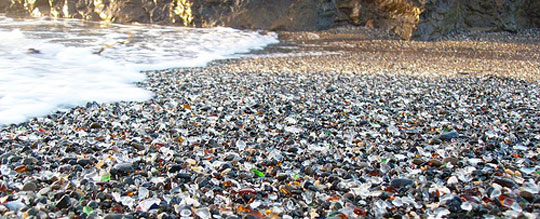 |
|---|
| Ocean Dumping Is A Complicated Issue. It's Easy to Do and Hard To Control. |
The London Convention on Sea Dumping
One of the more complicated issues of world environmental regulation is deciding who has authority and who has responsibility when it comes to protecting the oceans from pollution by dumping at sea.
One of the main difficulties in policing the littering of the oceans by dumping at sea is the uncertainty of jurisdiction.
Under the UN Convention on the Law of the Sea, open ocean for 200 nautical miles around coastal states is called the Exclusive Economic Zone. Outside that area the ocean is called the High Seas. The seabed and ocean floor fall in the same gray area as the High Seas. The High Seas are international waters which don’t belong to any one nation. Since the High Seas are largely without national jurisdiction, the only jurisdiction that applies is the so-called London Convention/London Protocol.
The Convention on the Prevention of Marine Pollution by Dumping of Wastes and Other Matter 1972, commonly called the “London Convention,” is an agreement to control pollution of the sea by dumping and to encourage regional agreements supplementary to the Convention to prevent dumping. It covers the deliberate disposal at sea of wastes or other matter from vessels, aircraft, and platforms. It does not cover discharges from land-based sources such as pipes and outfalls, wastes generated incidental to normal operation of vessels, or placement of materials for purposes other than mere disposal. The London Convention went in force in 1975. As of 2005, there were 81 Parties to the Convention.
The main objective of the London Convention and a subsequent amending agreement known as the London Protocol is to prevent indiscriminate disposal at sea of wastes that could become hazards to human health; harming living resources and marine life; damaging amenities; or interfering with other legitimate uses of the sea. The 1972 Convention extends its scope over “all marine waters other than the internal waters” of the States and prohibits the dumping of certain hazardous materials. It further requires a prior special permit for the dumping of a number of other identified materials and a prior general permit for other wastes or matter.
In general, the state whose flag the ship is flying usually has jurisdiction on the high seas. So wherever the ship is registered, that country has the authority to do something about the waste the ship dumps illegally. The flag state, of course, can only enforce if it has enacted regulations.
A lot more information about ocean dumping.
Early November Water News
The Pure Water Gazette features its pick of the top water news story each day. Here's what you missed in the first half of November if you haven't been reading the Gazette:
The new Gazette format also indexes much of the significant content of the old online and paper versions of the Pure Water Gazette. Take some time to browse. As our ad says, you'll find "Vast piles of information in the Gazette's tangy, irreverent style."
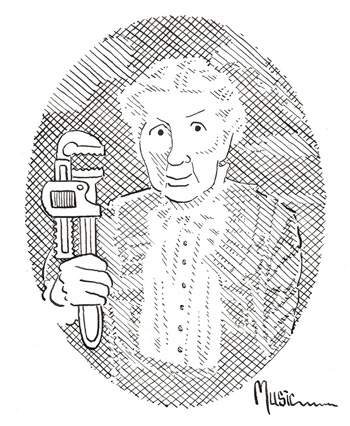 |
Water Filter Fittingsby Pure Water AnnieTechnical Wizard Pure Water Annie Describes the Parts that Hold Tubes Together on Drinking Water Filters and RO Units |
|---|
The most commonly used fittings on reverse osmosis units and undersink water filters are the nylon compression fittings called Jaco and the more recently developed push-in quick connects called John Guest. There are many manufacturers of both styles, but the imitators are most often referred to by the name of the originator — the way that all soft drinks are sometimes called “cokes.” The fittings on our page are from the original manufacturers — John Guest and Jaco — and we also supply the superb double-o-ring Mur-lok quick connect fittings from the G. A. Murdock Company.
The two fittings styles can be interchanged without a problem. If your unit uses Jaco fittings and you want to replace one or more fittings with a John Guest style, there's no problem. There is, however, one essential rule you must follow: Jaco fittings must always be used with a tube insert, and tube inserts are never used with John Guest or Mur-lok quick connects.
To connect Jaco Fittings, back the nut onto the tube, insert the tube insert as far as it will go into the tube, then screw on the nut. Tighten it as tight as you can get it with your hand, then take one more complete turn with a wrench. No more than one. Over tightening will eventually result in a leak.
With John Guest style, be sure that the tube is cut squarely, then push it into the fitting until you feel it hit bottom. It's done. If you need to remove the tube, be sure that all pressure is off the fitting, push in on the collet with your thumbnail, and pull the tube out.
The tubing we sell and the tubing we use on all units that we build is top grade polyethylene from John Guest or G. A. Murdock. Tubing used for reverse osmosis units and undersink filters is always measured by its outside diameter. Undersink reverse osmosis units use 1/4" OD tubing, and some units use a mixture of 1/4" and 3/8" tubing.
Top to bottom: Remember: Always use a tube support with Jaco fittings but never use a tube support with quick connect fittings. |
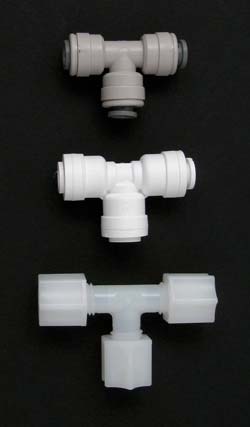 |
|---|---|
| Tube Support. Inserts into the end of the tube to give it strength. It is used only with compression fittings. | 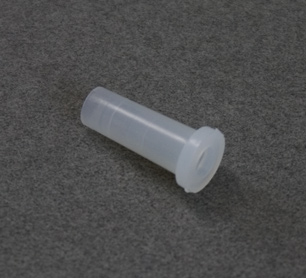 |
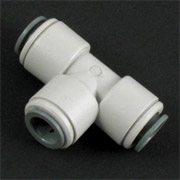 |
|---|
Pure Water Products stocks quick connect fittings like the above in all popular John Guest styles and in several Mur-lok double O-Ring varieties. How To Repair Quick Connect Fittings
|
B. Bea Sharper
Gazette Numerical Wizard B. Bee Sharper Reveals the Numerical Facts About This Issue, to See If You've Been Paying Attention |
 |
|---|
Water required to sustain one square foot of conventional lawn at a Las Vegas hotel--60 gallons per year.
Water required to water one square foot of xeriscaped area at a Las Vegas hotel-- 20 gallons per year.
Annual water use of a single faucet leaking 30 drops per minute --1,000 gallons.
Annual use of a single water-efficient urinal in an office building -- 30,000 to 40,000 gallons.
Percentage of raw sewage tested by the University of Nebraska that was contaminated with MRSA -- 83%.
Percentage by which pro-fluoridationists were defeated in the Wichita, KS fluoride election of November 2012 -- 20%.
Cost to citizens of a pipeline needed to keep Nellis Air Force Base wastewater out of a Las Vegas area storm channel -- $15 million.
Wells drilled by the EPA as part of its treatment for PCE-contaminated water at Grants, NM-- 570.
Parts per million hardness represented by a “grain” -- 17
Hardness level, in grains per gallon, where water treatment for hardness is usually considered necessary → 4 to 7 grains.
Year the London Convention on sea dumping took effect -- 1975.
Number of participating parties in the London Convention as of 2005 -- 81.
Here are some sections on the Occasional's website that you will want to visit:
Links to Pages about Water and Water Treatment
New Products from Pure Water Products
Pure Water Annie's Glossary of Water Treatment Terms
The Pure Water Occasional is a project of Pure Water Products. Please visit our websites: Main Website: www.purewaterproducts.com This site features our full range of products, plus instructions, technical articles, product manuals, and more. The Occasional's Website: www.purewateroccasional.net. In addition to archiving back issues of the email Occasional, this site houses a sizeable section about water contaminants, a "how things work," series, a new products section, a glossary of water treatment terms, and, "much, much more." Other Pure Water Products Sites: www.purauv.com To contact us by phone, please call 940 382 3814.
|
|---|

